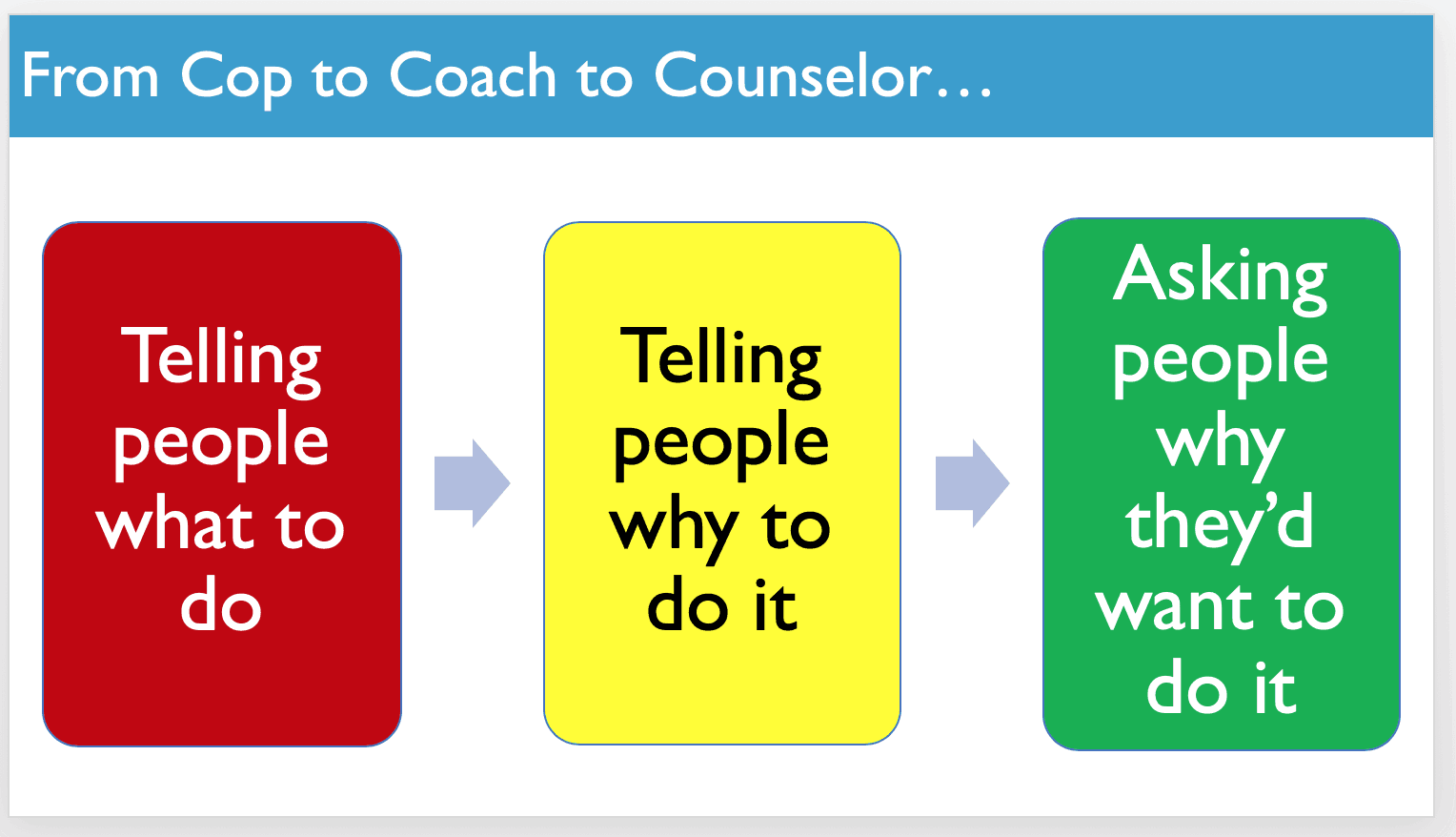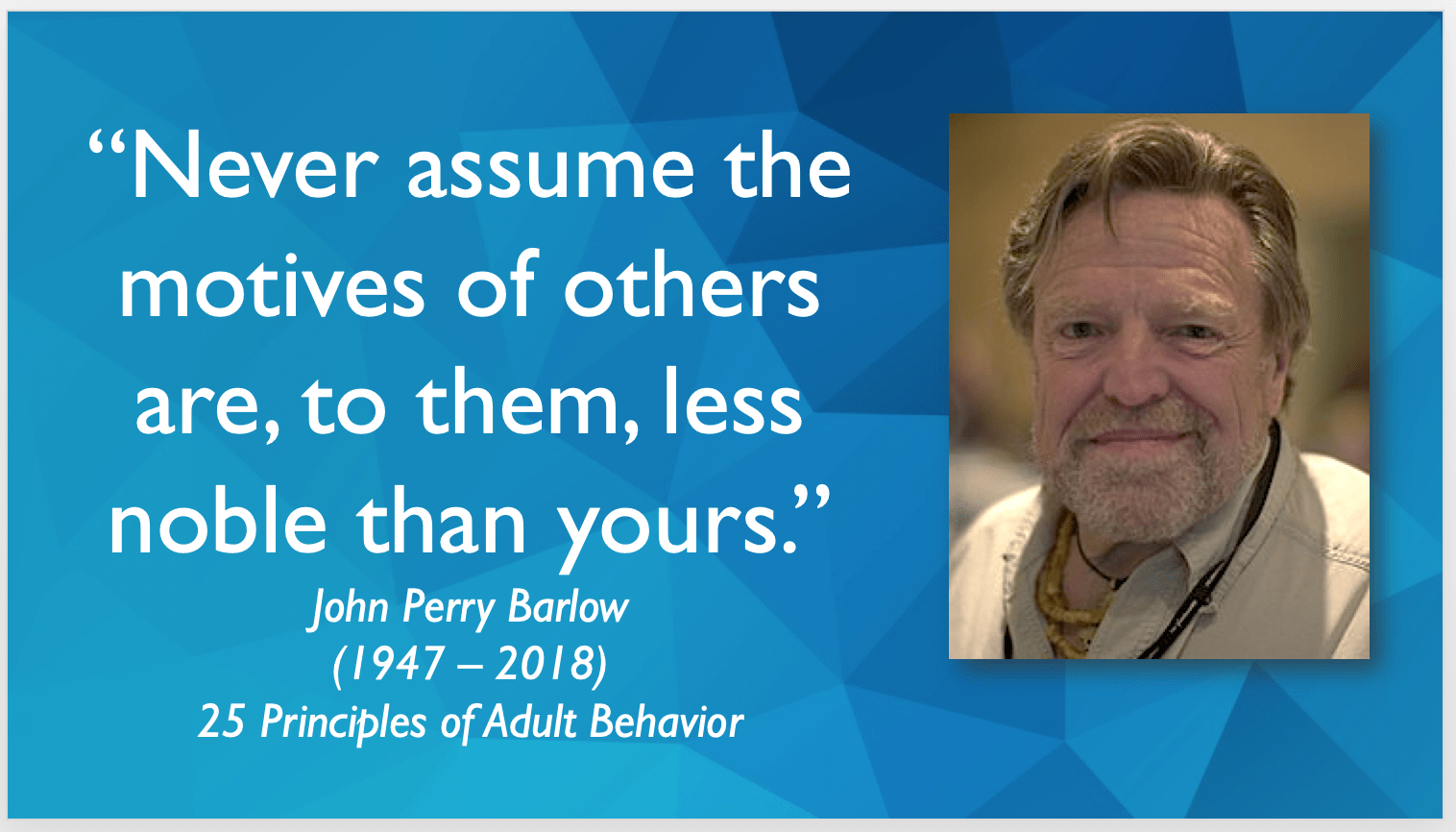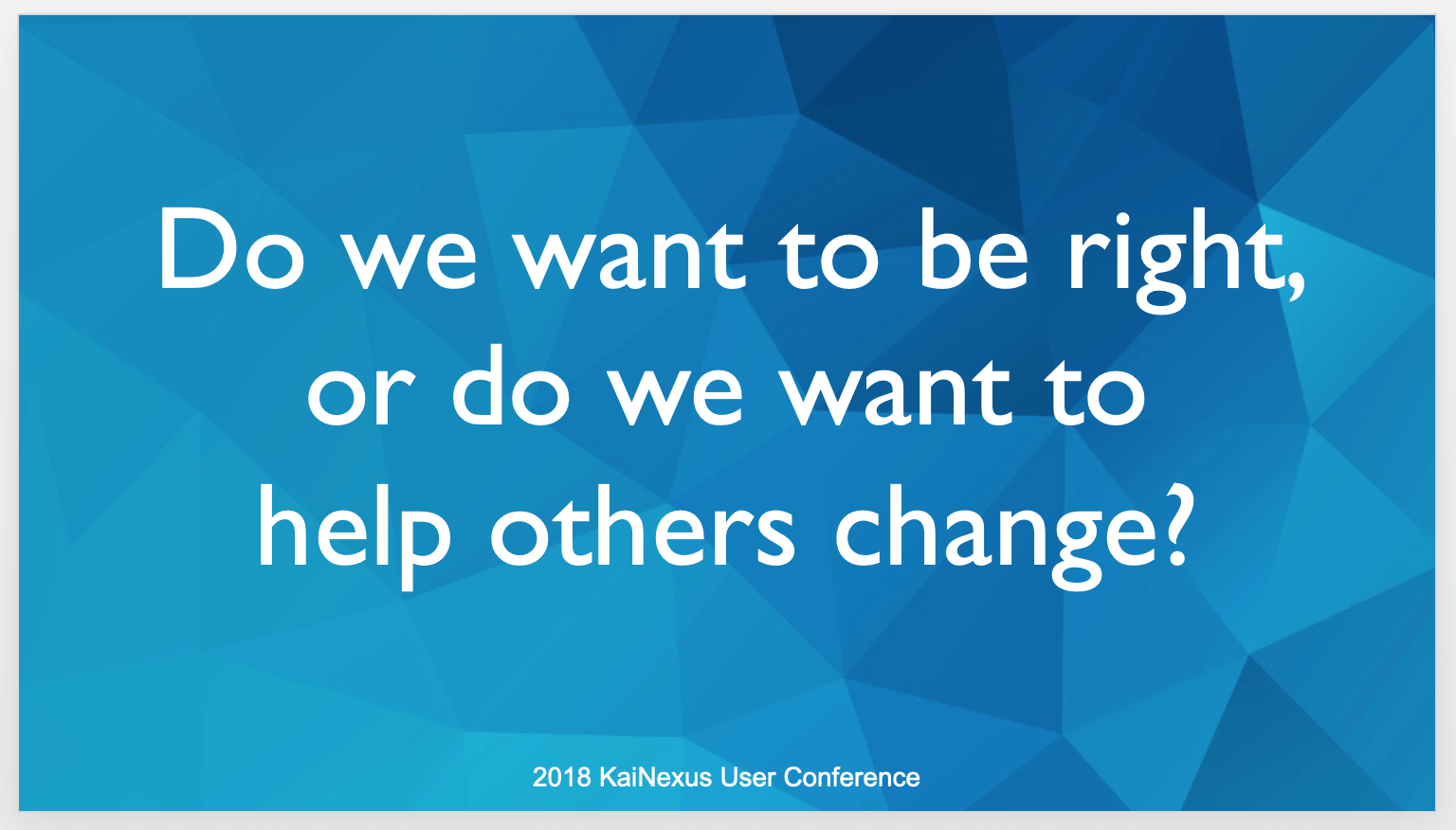I'm at the fourth annual KaiNexus User Conference in exciting Austin, Texas. We have customers here from many industries, which corresponds with the growth of KaiNexus and the way we've been pulled into other customers outside of our initial home in healthcare.
Yesterday, I facilitated the “ExperienceChange” workshop that's built around groups working together on an interactive change management case study as a way to learn. It's a really impactful way to learn about and reflect upon a change management model that can be used for any large-scale change, such as a Lean transformation or the adoption of KaiNexus software (and these two issues are often very intertwined).
Here's two of the groups working together, below. The workshop is, I think, very good adult learning, since I'm not standing there lecturing from PowerPoint all day (and a PowerPoint-free zone is one of the themes of this upcoming event that has a few spots left).
One of the themes in the change management workshop is that we can't force people to change. Leaders need to work with people to help bring them along. Instead of just labeling somebody as “resistant to change” in a stakeholder analysis exercise, identifying those who aren't ready to change means we need to work with those people more.
Today, I'm giving a talk at the main KaiNexus User Conference on themes about personal change and organizational change, building on lessons from Motivational Interviewing.
Some key points include:
- Change is a process
- “Resistance” to change (better labeled as “ambivalence”) is a natural part of the change process
- We can't force anyone to change
- We need to engage with people in conversations about change
- Leader behaviors, words, and actions that trigger “change talk” and evoke reasons for change will increase the chance we see people choose to change and take action
Below are my slides and a webinar-style recording of the talk. I'm curious to hear what you think.
My slides (PDF via Dropbox):
PDF via Dropbox or SlideShare
Webinar Recording of a Practice Session:
A few slides and a quote:
I hope you have a great day. Thanks for reading and checking this out.
What do you think? Please scroll down (or click) to post a comment. Or please share the post with your thoughts on LinkedIn – and follow me or connect with me there.
Did you like this post? Make sure you don't miss a post or podcast — Subscribe to get notified about posts via email daily or weekly.
Check out my latest book, The Mistakes That Make Us: Cultivating a Culture of Learning and Innovation:















RE: “’Resistance’ to change (better labeled as ‘ambivalence’) is a natural part of the change process.” Ambivalence may be an appropriate characterization for followers. But for leaders (especially VP, president, CEO, and the Board), “resistance” is an appropriate characterization. The reason being is that they have much to lose by embracing Lean management — much of what they lose is real, and some of that is imagined. My recent work has documented the various losses, most of which run deep and are securely interconnected, and lead to a firm commitment to being right — even more so when wrong. So, based on my work, I see change management is a vastly different problem for top leaders than it is for lower-level leaders and followers, where MI can be very effective.
The word “ambivalence” refers to something that person wants to do (to some extent) but also doesn’t want to do.
An executive might be “ambivalent” about Lean… and particular behaviors. They might express “change talk” in terms of “I know I should get input from the next level down on our strategy deployment goals and plan” but they’ll also express “sustain talk” such as “but I don’t have time to do that” or “their input won’t matter.”
If an executive doesn’t have any interest in Lean, they’re not resistant or ambivalent. They’re not even in the “pre-contemplation” stage of change.
If they are interested on some level but “also have too much to lose” that sounds like the textbook definition of “ambivalence.”
This is human nature. Executives are human.
Telling executives “they need to do Lean” isn’t likely to influence them. Again, that human nature and psychology thing. I think it applies to everybody *if* they have some even minimal level of need, desire, etc. When “sustain talk” (like “I have too much to lose”) overwhelms the change talk (“Lean might be good for my business”) then the status quo will win.
One other thought — M.I. can only be effective if the client/patient WANTS to change on some level. M.I. isn’t about manipulating or forcing anyone to change.
One thing I shared during the talk was the ironic risk of me telling people to stop telling and to start evoking.
Telling people why they should change isn’t as effective in drawing out (evoking) motivations from the people you’re trying to help change.
I think the preponderance of evidence over the last 30 years indicates that the level of interest most top leaders have in Lean is only to the extent that it can be used to preserve their vested rights, power, and control (called “inequality maintenance”). So I do not see that as a “textbook definition of ‘ambivalence’.” Instead, it is a determined, purpose-driven sublimation of Lean management into much lesser forms that are acceptable to them. Said another way, Lean does not influence execs; execs influence Lean (i.e. dilute, weaken, degrade, contaminate).
That doesn’t sound like “resistance” either. That sounds like psychopathy. But I’m not a therapist.
No, it’s not psychopathy. Knowingly or not, they seek to preserve the centuries old Western tradition of Natural Rights. Therefore, they resist Lean.